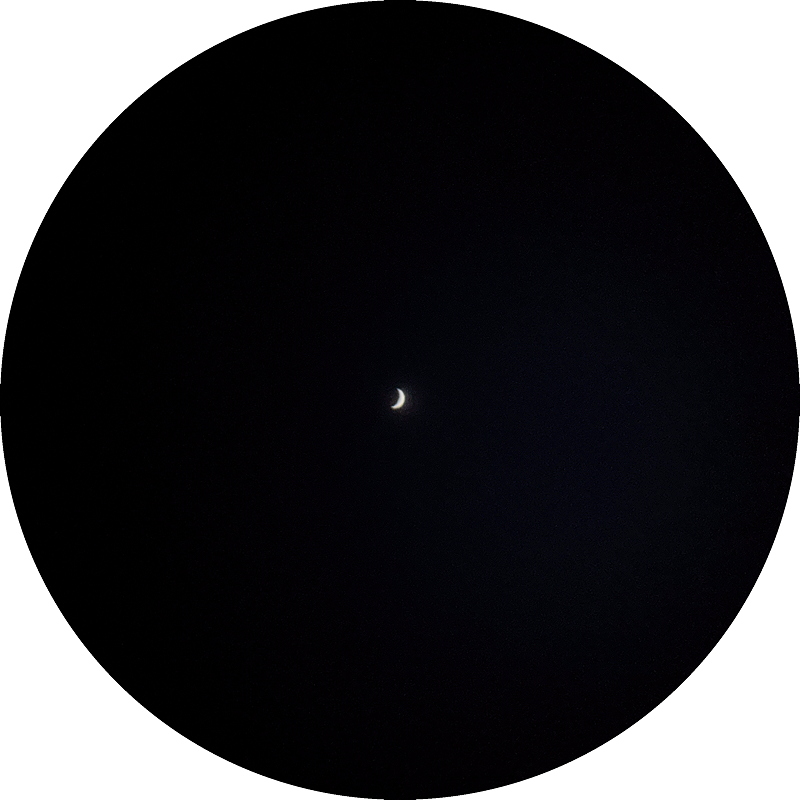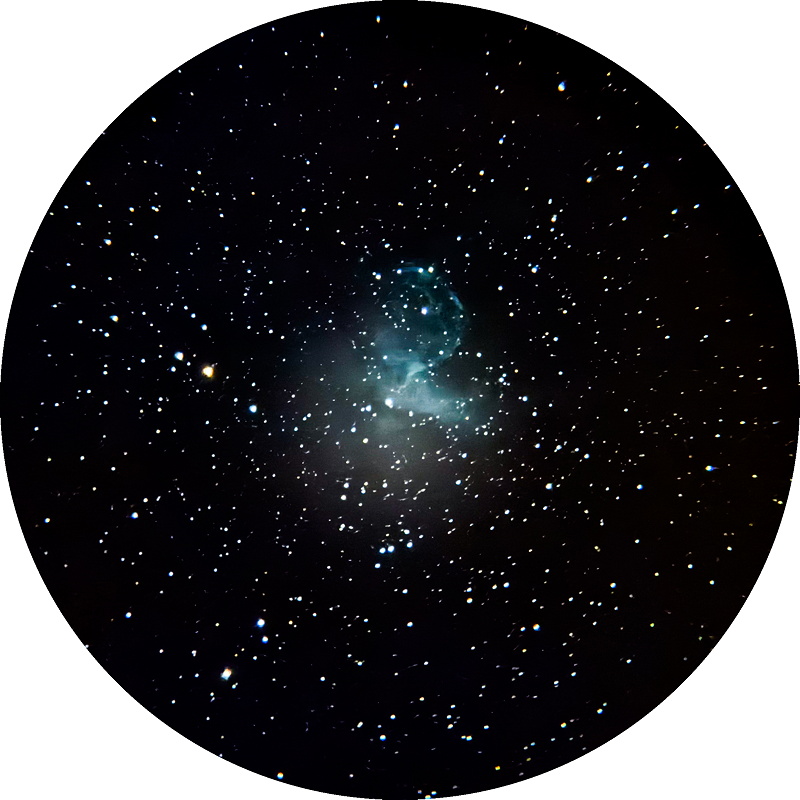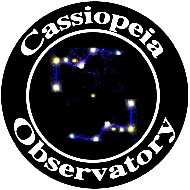iPhone Astrophotography Rosette & Thor's Helmet Nebulae, M46
Posted: 19 February 2025
Cloudy nights returned on Sunday, 16 February 2025. The sky cleared on Tuesday, 18 February.
|
Open: Tuesday, 18 February 2025, 1807 MST Temperature: 74°F |
Session: 2072 Conditions: Clear |
Equipment:
12" f/8 LX600 w/StarLock
2" 24mm UWA eyepiece
2" 50mm eyepiece
2" 30mm eyepiece
Camera:
iPhone 15 Pro Max
1811 MST: Sunset.
1813 MST: LX600 ON, StarLock OFF, High Precision OFF.
Tried to observe Mercury, but it was too low in the western sky.
Observed Saturn, low and faint in the bright twilight sky, 102X. Viewed Venus, 102X.
Took this handheld iPhone 15 Pro Max afocal 102X image of Venus using NightCap Camera (ISO 55, 1/3600sec, 1X lens).

Observed Jupiter and the four Galilean Moons, 102X. Observed Mars, 102X.
1831 MST: Slewed to M42 (Great Nebula in Orion). No nebulosity was visible in the twilight sky, but the Trapezium stars were nicely visible, 102X.
1834 MST: High Precision ON.
Slewed to NGC2237 (Rosette Nebula). It was not visible in the twilight sky.
1908 MST: The Rosette Nebula was faintly visible, 49X.
Attached the LiDAR Cover on the iPhone 15 Pro Max and mounted the iPhone on the 2" 50mm eyepiece using the 3-axis adapter.
1918 MST: StarLock ON.
Took the following StarLock autoguided images using the Camera app (Night Mode, 30 seconds, 1X lens).
NGC2237 (Rosette Nebula), 49X

NGC2359 (Thor's Helmet Nebula), 81X

M46 (open star cluster) & NGC2438 (planetary nebula), 81X

2011 MST: StarLock OFF.
Observed M46 (open star cluster) & NGC2438 (planetary nebula), 102X.
2015 MST: LX600 OFF.
2025 MST: Took a Sky Quality reading.
|
Close: Tuesday, 18 February 2025, 2027 MST Temperature: 54°F |
Session Length: 2h 20m Conditions: Clear, SQM 20.75 |
Comments are welcome using Email. Please read the Email Etiquette guidance.
Cassiopeia Observatory Home Page
Copyright ©2025 Michael L. Weasner / mweasner@mac.com.
URL = http://www.weasner.com/co/Reports/2025/02/19/index.html

